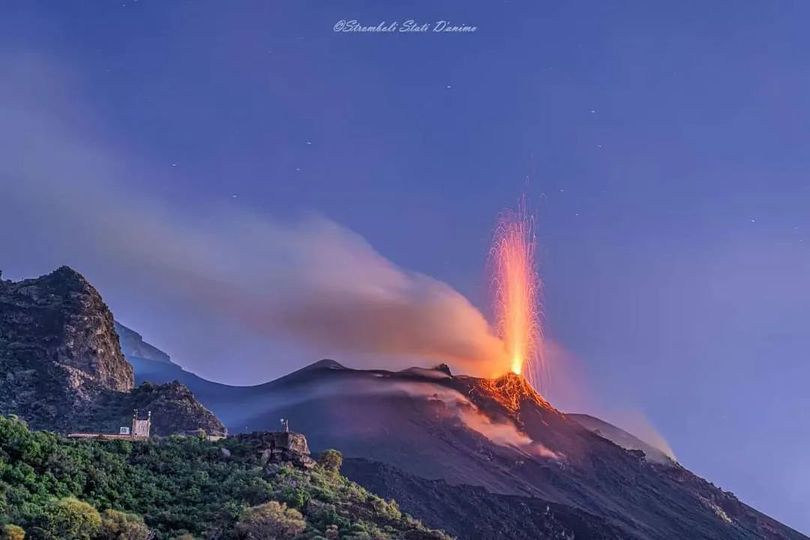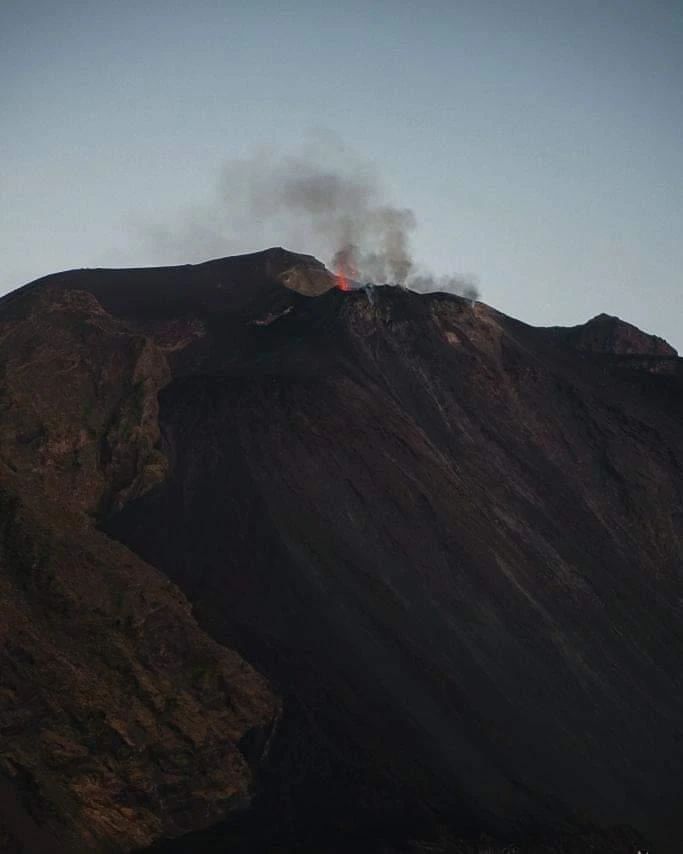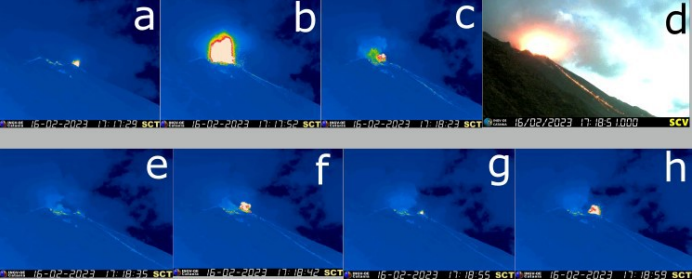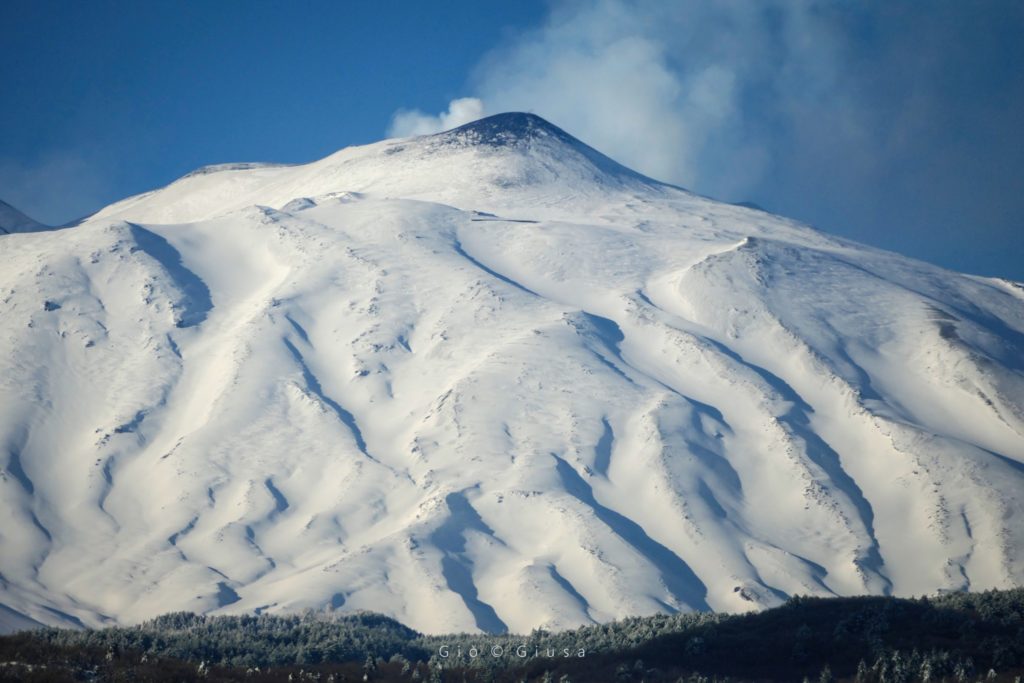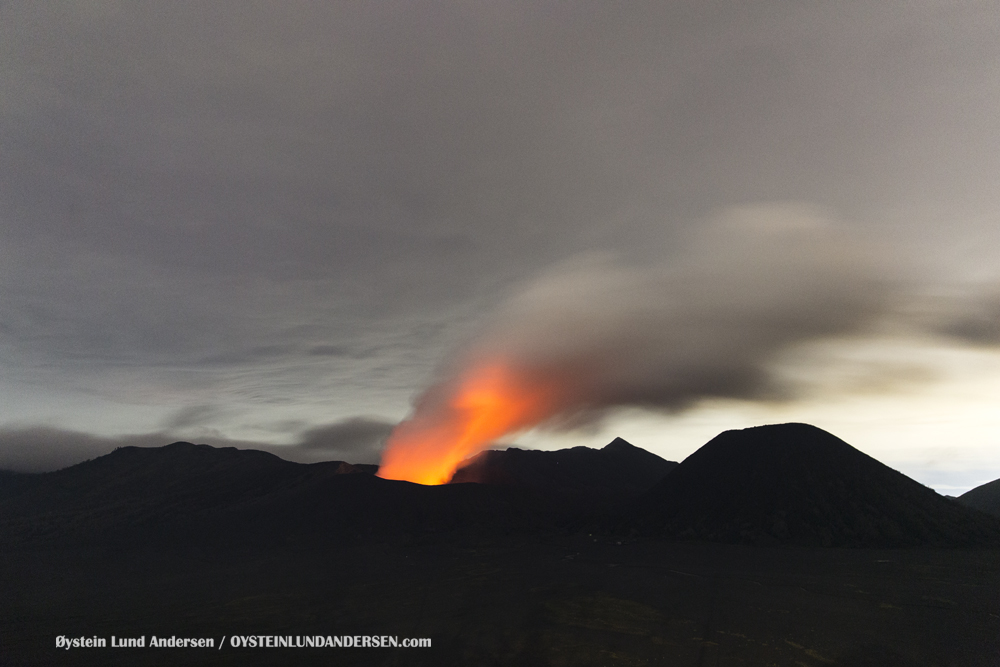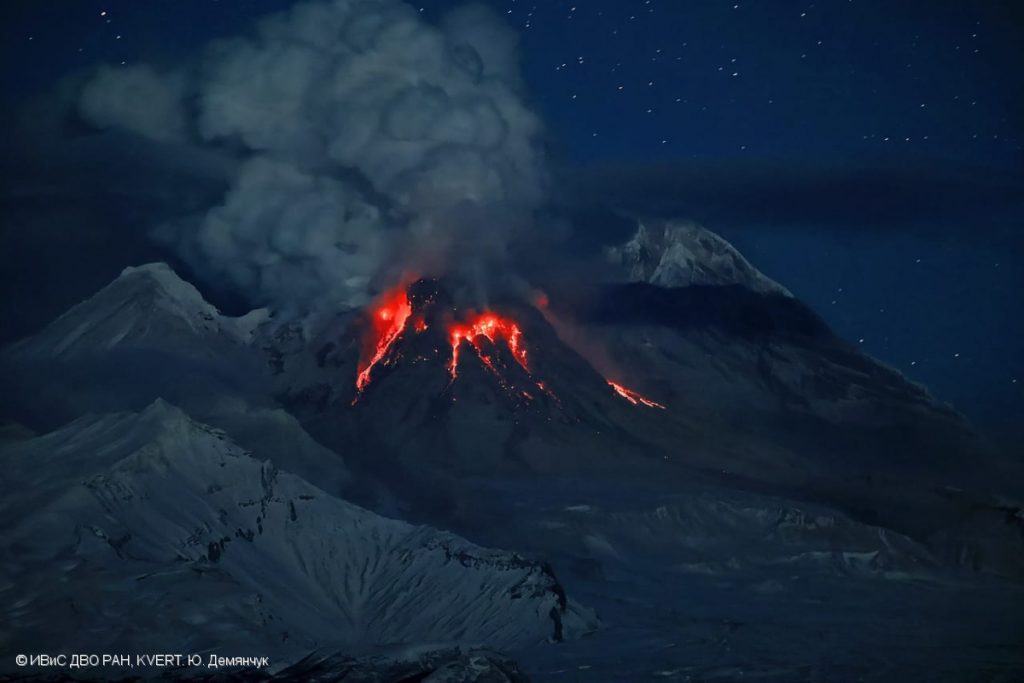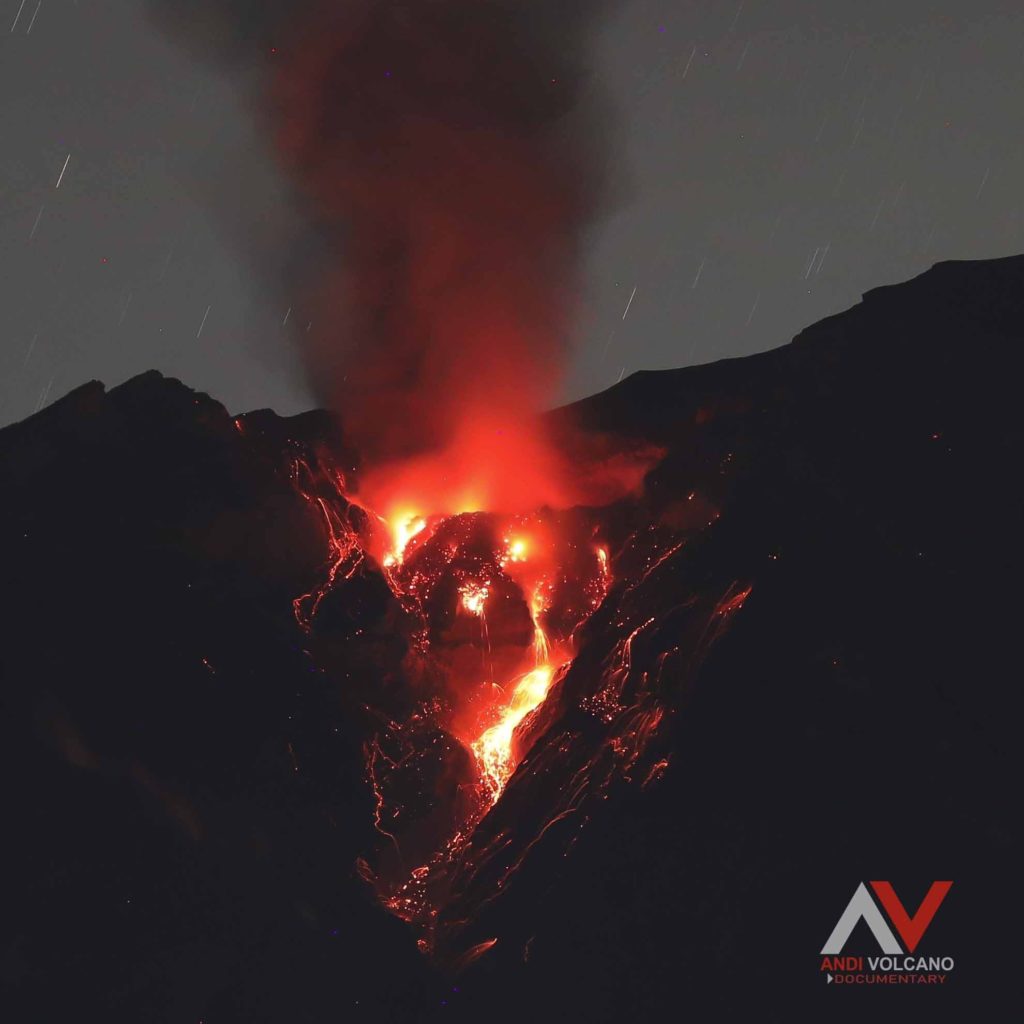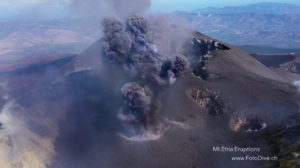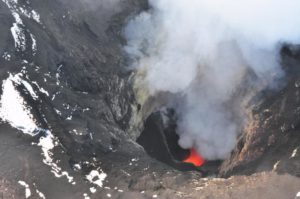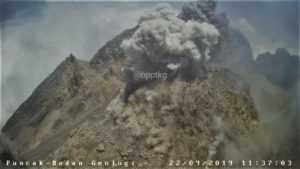February 22 , 2023.
Italy , Stromboli :
WEEKLY BULLETIN, from February 13, 2023 to February 19, 2023. (issue date 21 February 2023)
ACTIVITY STATUS SUMMARY
In the light of the monitoring data, it is highlighted:
1) VOLCANOLOGICAL OBSERVATIONS: During this period, normal Strombolian activity was observed with splashing activity in the North crater area and an explosive sequence in the Center – South crater area.
The total hourly frequency oscillated between medium-low (8 events/h) and medium (13 events/h) values.
The intensity of the explosions was mainly medium and low in the North crater area and medium-high in the Center – South crater area.
2) SEISMOLOGY: The seismological parameters monitored do not show any significant variations, with the exception of the sequence of explosions of amplitude greater than the ordinary activity recorded on 02/16.
3) GROUND DEFORMATIONS: The ground deformation monitoring networks did not show any significant variations.
4) GEOCHEMISTRY: The flow of SO2 at an average level.
CO2 flux in the crater area: stable on average values
The CO2/SO2 ratio is at average values (6.1).
Isotope ratio of dissolved helium in heat sinks: There are no updates.
5) SATELLITE OBSERVATIONS: The thermal activity observed from the satellite was generally weak.
VOLCANOLOGICAL OBSERVATIONS
During the observation period, the eruptive activity of Stromboli was characterized by the analysis of the images recorded by the surveillance cameras of the INGV-OE at an altitude of 190 m (SCT-SCV), Punta dei Corvi, while images from the 400m cameras and the Pizzo are not currently available.
Due to the unfavorable weather conditions of February 19, the visibility of the crater area was insufficient for a correct description of the eruptive activity.
Furthermore, it should be noted that on February 16, 2023, an explosive sequence affected the area of the Center-South crater.
Observations of explosive activity captured by surveillance cameras
In the northern zone of the crater (N), from the two mouths of the two sectors N1 and N2, an explosive activity of variable intensity from low (less than 80 m in height) to medium (less than 150 m in height) has been observed with emission of coarse materials (bombs and lapilli)). In addition, intense projection activity is observed over short periods on February 13 from the vents located in the N2 sector. The average frequency of explosions varied from 2 to 6 events/h.
In the Center-South (CS) zone, explosive activity of medium to high intensity was observed (sometimes the products exceeded 150 m in height) with the emission of coarse materials mixed with fine materials (ash). The frequency of explosions varies between 4 and 7 events/h.
Explosive sequence of February 16, 2023.
On February 16, 2023, an explosive sequence characterized by a major explosion was produced by the south-central area of the crater terrace.
Below is the timeline of the event with time in UTC:
17:17:29 from sector S2 the first phase of the explosive sequence begins (Fig. 3.3 a) with the launching of shreds of lava in a radial direction and after a few seconds the sequence, took on the character of a fountain, involving the central sector C of the crater terrace (Fig.3.3 b). This first phase ends with at least three explosions of medium intensity (less than 150 m high) in sector S2 (Fig. 3.3c).
The products of this first phase exceeded 300 m in height and lasted about 1 min. In fig. 3.3 days the trace of products that fell along the Sciara del fuoco.
The second phase of the sequence concerned sector S1 of the CS zone.
At 17:18:35 an explosive event lasting 7 s and about 150 m high occurs (Fig. 3.3 e-f), followed at 17:18:55 by a second event lasting 150 m. 12 s and of a similar height to the first (Fig. 3.3 g-h).
The sequence ends with at least three explosions of mostly fine material produced by the mouths of sector S1. The total duration of the sequence was approximately 2 minutes.
Source : INGV.
Photos : Stromboli stati d’animo.
Italy / Sicily , Etna :
WEEKLY BULLETIN, from February 13, 2023 to February 19, 2023. (issue date 21 February 2023)
ACTIVITY STATUS SUMMARY
In the light of the monitoring data, it is highlighted:
1) VOLCANOLOGICAL OBSERVATIONS: Degassing of the summit craters, in particular continuous degassing of the Bocca Nuova crater (BN) and the Southeast crater (SEC).
2) SEISMOLOGY: Absence of seismic activity of fracturing with Ml>=2.0; average amplitude of the volcanic tremor in the average level.
3) INFRASOUND: Low infrasound activity
4) GROUND DEFORMATIONS: Ground deformation monitoring networks have not measured any significant changes over the past week
5) GEOCHEMISTRY: SO2 flux at a medium-low level.
The soil CO2 flux values recorded last week are average values.
The partial pressure of dissolved CO2 in groundwater (EtnaAcque Network) does not show variations apart from the seasonal variability of the site.
There are no updates on helium isotopic composition data.
6) SATELLITE OBSERVATIONS: Thermal activity observed from the satellite was generally weak.
VOLCANOLOGICAL OBSERVATIONS
The monitoring of the volcanic activity of Etna was mainly carried out through the images of the surveillance cameras of the INGV – Osservatorio Etneo.
Sightings were very limited due to unfavorable weather conditions.
During the week, continuous degassing was observed in the Southeast and Bocca Nuova craters.
When the weather conditions allowed it, it was possible to observe, during the night hours, lightning near the aforementioned craters.
Source : INGV.
Photo : Gio Giusa
Indonesia , Bromo :
Press Release: Mount Bromo Crater Monitoring Results.
On February 3, 2023, there was an increase in Mount Bromo crater activity with incandescence observed from inside the crater.
The results of the Mount Bromo crater inspection during the period February 9-12, 2023 are as follows:
Gas measurements at the crater rim with the Dragger gas detector show that SO2 gas concentrations are often detected above the normal healthy threshold (above 5 ppm). The sulfur gas smell is moderate to strong on the crater rim.
Smoke from the crater was observed to be medium to thick white with a height of up to 300 meters. The rumbling coming from inside the crater sounded moderate to loud. When clear, the crater floor can be seen with the largest solfatara point lying on the north-northwest side of the crater floor. According to the results of Thermaca measurements (based on IR) taken from several points on the rim of the crater, the hottest temperatures of the solfatara ranged from 46 to 66°C, while according to the measurements with the Thermogun (based on IR) which were targeted from the same location, it ranged from 44 to 67.3°C.
Visual observations at night showed that the incandescence was still observed and originated from the northwest bottom of the crater floor which is the largest area of solfatara.
Measurement of SO2 gas from Mount Bromo crater using the DOAS Traverses method on February 11, 2023 showed emission rates (flux) of SO2 gas from Mount Bromo crater at 230 and 150 tonnes/day (average of 190 tons/day).
The potential danger caused by the increased activity of Mount Bromo crater is the occurrence of phreatic or magmatic eruptions with the distribution of eruption material in the form of ash and ejected (incandescent) rocks up to a radius of 1 km from the center of the crater, as well as the potential danger of volcanic gases that can harm health.
Based on the results of an in-depth assessment, Mount Bromo’s activity level on February 13, 2023 at 08:00 WIB is still at Level II (Waspada) with recommendations adjusted to the latest potential threats, as follows:
Communities around Mount Bromo and visitors/tourists/climbers do not enter the crater area within 1 km of active Mount Bromo crater.
Communities around Mount Bromo, traders, tourists, climbers and Mount Bromo tourism officials should be aware of sudden phreatic eruptions not preceded by clear volcanic symptoms.
Mount Bromo’s activity level may be reassessed if there is a significant change in activity visually and instrumentally.
Source : PVMBG.
Photos : Oystein Lund Andersen , PVMBG.
Kamchatka , Sheveluch :
VOLCANO OBSERVATORY NOTICE FOR AVIATION (VONA)
Issued: February 22 ,2023
Volcano: Sheveluch (CAVW #300270)
Current aviation colour code: ORANGE
Previous aviation colour code: orange
Source: KVERT
Notice Number: 2023-26
Volcano Location: N 56 deg 38 min E 161 deg 18 min
Area: Kamchatka, Russia
Summit Elevation: 3283 m (10768.24 ft), the dome elevation ~2500 m (8200 ft)
Volcanic Activity Summary:
The growth of the lava dome continues, a strong fumarole activity, an incandescence of the lava dome, sometimes explosions, and hot avalanches accompanies this process. Satellite and video data by KVERT showed a strong gas-steam plume contained some amount of ash is drifting to the north-west of the volcano.
The extrusive eruption of the volcano continues. Ash explosions up to 10-15 km (32,800-49,200 ft) a.s.l. could occur at any time. Ongoing activity could affect international and low-flying aircraft.
Volcanic cloud height:
4500-5000 m (14760-16400 ft) AMSL Time and method of ash plume/cloud height determination: 20230222/0135Z – Video data
Other volcanic cloud information:
Distance of ash plume/cloud of the volcano: 35 km (22 mi)
Direction of drift of ash plume/cloud of the volcano: WNW / azimuth 300 deg
Time and method of ash plume/cloud determination: 20230222/0044Z – JPSS-1 15m16
Source : Kvert
Photo : Yu. Demyanchuk, IVS FEB RAS, KVERT.
Indonesia , Semeru :
VOLCANO OBSERVATORY NOTICE FOR AVIATION – VONA
Issued : February 22 , 2023
Volcano : Semeru (263300)
Current Aviation Colour Code : ORANGE
Previous Aviation Colour Code : orange
Source : Semeru Volcano Observatory
Notice Number : 2023SMR064
Volcano Location : S 08 deg 06 min 29 sec E 112 deg 55 min 12 sec
Area : East java, Indonesia
Summit Elevation : 11763 FT (3676 M)
Volcanic Activity Summary :
Eruption with volcanic ash cloud at 00h10 UTC (07h10 local).
Volcanic Cloud Height :
Best estimate of ash-cloud top is around 14963 FT (4676 M) above sea level or 3200 FT (1000 M) above summit. May be higher than what can be observed clearly. Source of height data: ground observer.
Other Volcanic Cloud Information :
Ash cloud moving to north. Volcanic ash is observed to be white to gray. The intensity of volcanic ash is observed to be thick.
Remarks :
Eruption recorded on seismogram with maximum amplitude 22 mm and maximum duration 130 second.
Seismicity: 18 earthquakes of eruptions/explosions with an amplitude of 15 to 22 mm and a duration of 100 to 130 seconds were recorded.
Source : Magma Indonésie .
Photo : Andi Volcanist.

